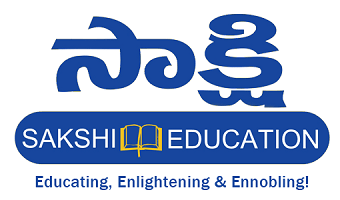An Interview with Mr Dilip Chenoy, Managing Director and CEO, The National Skill Development Corporation (NSDC)
Sakshi Education
Mr Dilip Chenoy MD and CEO, The National Skill Development Corporation (NSDC) shares the mission and targets of NSDC and the challenges ahead for the organisation… exclusively with Sakshi.


When was NSDC setup and with what mission?
The National Skill Development Corporation India (NSDC) is a Public Private Partnership set up in July 2008 as part of a national skill development mission by the Government of India under the aegis of the finance Ministry to skill 150 million people by 2022. Our mission is to upgrade skills to international standards, support and coordinate private sector initiatives for skill development with a major focus on underprivileged sections of society and backward regions of the country.
Why is there a need for an organisation like NSDC?
As you know there is a huge mismatch between the Industry expectations and the skill set of the workforce, Indian economy with this kind of growth prospects requires a large skilled workforce. The shortage of skills may be due to the lack of quality trainers and training institutes. At this stage NSDC is mandated to fill the gap between the growing demand for, and the scarce supply of, skilled personnel across sectors, by funding skill training programmes.
What are the targets NSDC has set for?
Our aim is to promote skill development partnering with private sector by catalyzing creation of large, quality, for-profit vocational institutions and train the trainer academies either directly or through partnerships.
How do you fund the skill development programmes?
National Skill Development Fund was initially setup with a national corpus of 1000 crores and aiming to increase it to 15000 crore by 10 years. NSDC calls for proposals in select areas from private players, industry bodies, entrepreneurs and NGOs. After thorough evaluation and subject to clearance by the NSDC Board the funding is granted.
What were your achievements so far?
The first three funding have created a large scale training initiatives and now we have an annual training capability of 4.36 Million people. We have covered 303 districts in India and in the last quarter of Oct-Jan nine proposals have been added and 13 proposals are in pending.
Can you tell us about your teaming up with TMI for launching the e2E Academy?
Our partnering with TMI is one among the 14 proposals of public private partnership in skill development initiative. This launch of TMI e2E Academy will create the employment solutions to 5.26 lakh Graduates in 31 States and Union Territories with investments of Rs. 29.21 crores. This co-initiative will address one of the biggest challenges faced by the nation of unemployable Graduates as only 20 to 25% of 2 million pass outs every year are employable.
Does this project have any social benefit?
By this co- initiative the employment for about 5.26 lakh graduates through Assessment and training Centers is to be created over a period of 10 years. Assuming that 10% of the target group will be below poverty line, nearly 50000 families will be benefited. We identify the tier 2 and 3 towns of which about 75 backward districts or more will be benefited.
How do you monitor the programmes?
We will continuously monitor the use of funds, the progress of the project and impact on skill development. We have mandated to the private entities that 70% of the trained people have to be employed or shown higher education opportunities. To our surprise we are achieving 80-85% success in this regard.
What is the contribution of State Governments in this regard?
The state governments should own the programmes and take the responsibility of identifying the people who could finance the projects and also help us in identifying the existing infrastructure and people for the training programmes.
The National Skill Development Corporation India (NSDC) is a Public Private Partnership set up in July 2008 as part of a national skill development mission by the Government of India under the aegis of the finance Ministry to skill 150 million people by 2022. Our mission is to upgrade skills to international standards, support and coordinate private sector initiatives for skill development with a major focus on underprivileged sections of society and backward regions of the country.
Why is there a need for an organisation like NSDC?
As you know there is a huge mismatch between the Industry expectations and the skill set of the workforce, Indian economy with this kind of growth prospects requires a large skilled workforce. The shortage of skills may be due to the lack of quality trainers and training institutes. At this stage NSDC is mandated to fill the gap between the growing demand for, and the scarce supply of, skilled personnel across sectors, by funding skill training programmes.
What are the targets NSDC has set for?
Our aim is to promote skill development partnering with private sector by catalyzing creation of large, quality, for-profit vocational institutions and train the trainer academies either directly or through partnerships.
How do you fund the skill development programmes?
National Skill Development Fund was initially setup with a national corpus of 1000 crores and aiming to increase it to 15000 crore by 10 years. NSDC calls for proposals in select areas from private players, industry bodies, entrepreneurs and NGOs. After thorough evaluation and subject to clearance by the NSDC Board the funding is granted.
What were your achievements so far?
The first three funding have created a large scale training initiatives and now we have an annual training capability of 4.36 Million people. We have covered 303 districts in India and in the last quarter of Oct-Jan nine proposals have been added and 13 proposals are in pending.
Can you tell us about your teaming up with TMI for launching the e2E Academy?
Our partnering with TMI is one among the 14 proposals of public private partnership in skill development initiative. This launch of TMI e2E Academy will create the employment solutions to 5.26 lakh Graduates in 31 States and Union Territories with investments of Rs. 29.21 crores. This co-initiative will address one of the biggest challenges faced by the nation of unemployable Graduates as only 20 to 25% of 2 million pass outs every year are employable.
Does this project have any social benefit?
By this co- initiative the employment for about 5.26 lakh graduates through Assessment and training Centers is to be created over a period of 10 years. Assuming that 10% of the target group will be below poverty line, nearly 50000 families will be benefited. We identify the tier 2 and 3 towns of which about 75 backward districts or more will be benefited.
How do you monitor the programmes?
We will continuously monitor the use of funds, the progress of the project and impact on skill development. We have mandated to the private entities that 70% of the trained people have to be employed or shown higher education opportunities. To our surprise we are achieving 80-85% success in this regard.
What is the contribution of State Governments in this regard?
The state governments should own the programmes and take the responsibility of identifying the people who could finance the projects and also help us in identifying the existing infrastructure and people for the training programmes.
Published date : 28 Feb 2011 12:28PM


















